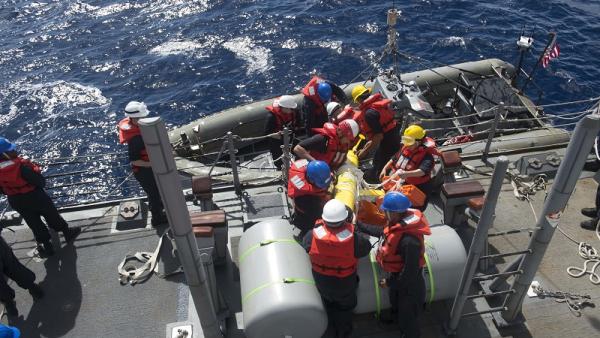Asia has opted for diplomacy on sea disputes

Elena Collinson, Senior Project and Research Officer, Australia-China Relations Institute, University of Technology Sydney |
This article appeared in the South China Morning Post, February 7 2017.
Australians noticed when US President Donald Trump’s then nominee for secretary of state, Rex Tillerson, told the Senate on January 11 that China should not be allowed access to its artificial islands in the South China Sea. If this amounted to a blockade, he would probably seek Australian participation. He said: “We’ve got to show back up in the region with our traditional allies in Southeast Asia.”
Australians also could not have missed the brutal message emerging from Trump’s phone conversation with their prime minister, Malcolm Turnbull: a volatile White House is poised to ride roughshod over old alliances, putting their contributions under intense scrutiny with an eye to what Washington gets in return.
But the nations of Southeast Asia that claim territory in the South China Sea have settled on diplomacy. None is seeking a US show of force or asking for US intervention. It’s uncertain for whom America would be mounting blockades.
The Philippines is the most dramatic example of one-on-one diplomacy with China, producing a kind of détente. In November, following President Rodrigo Duterte’s visit to Beijing, there was a quiet withdrawal of the Chinese troop ships and dredging barges that had reportedly arrived in Scarborough Shoal a few months earlier. Three hundred Filipino fishermen were reported to have returned to the shoal.
The biggest sign that Manila has downgraded the dispute was the low-key way it registered its protest at China’s installation of anti-aircraft and anti-missile systems on artificial islands in the Spratlys. The “note verbale” without fanfare or press releases was a shift from the megaphone diplomacy in place since 2010.
And it is not just the Philippines. The general secretary of the Vietnamese Communist Party, Nguyen Phu Trong, visited Beijing last month and the two sides issued a joint communiqué pledging to “manage well their maritime difference”. This followed a port call by Chinese warships at Cam Ranh Bay in October on Vietnam’s invitation. In short, Vietnam has not stepped forward to assume the leadership that the Philippines once showed in agitating against China.
This cordiality between China and Vietnam is likely to be confirmed when President Xi Jinping (習近平) visits Vietnam later this year. Some diplomatic sources believe Vietnam has interest in joint management of disputed maritime territory that might focus on environmental questions and fisheries management.
That appears to be what the Philippines and China are doing. Two Philippine coast guard vessels arrived at Scarborough Shoal on November 5 to start regular patrols, with four more ships planned for deployment. There have been no reports of clashes with the Chinese. Indeed, both sides cooperated in search-and-rescue efforts for missing Filipino fishermen.
If Vietnam is not stepping in to take the place of the Philippines, neither is Malaysia. The visit to Beijing by Malaysian Prime Minister Najib Razak in November saw the signing of a memorandum of understanding on naval cooperation – the first major attempt at a defence pact between the two countries.
An Australian news headline last year suggested joint patrols of the South China Sea by Indonesia and Australia. But there is no sign Jakarta wants to depart from non-alignment, let alone inherit from Manila the leadership of an anti-Chinese position within the Association of Southeast Asian Nations.
So how would Secretary Tillerson justify a blockade? No US allies or partners – Japan, Singapore or India – have shown the slightest interest in joining in. It would arguably be a breach of international law and very likely to be viewed by China as an act of war.
As for China, there are competing strands at work in its foreign policy. Its behaviour oscillates between rising-power forcefulness and cautious diplomacy. But with all of Southeast Asia engaging with it, Beijing would lose a lot by returning to assertiveness. In a sense, it is locked into restraint by its recent diplomacy.
Meanwhile, Australia should keep its options open and counsel restraint on all sides. It might even let the Trump administration know that, while they have been settling into new offices, in the South China Sea diplomacy seems to have become the order of the day.
Author
Elena Collinson is a researcher at the Australia-China Relations Institute, University of Technology Sydney.

